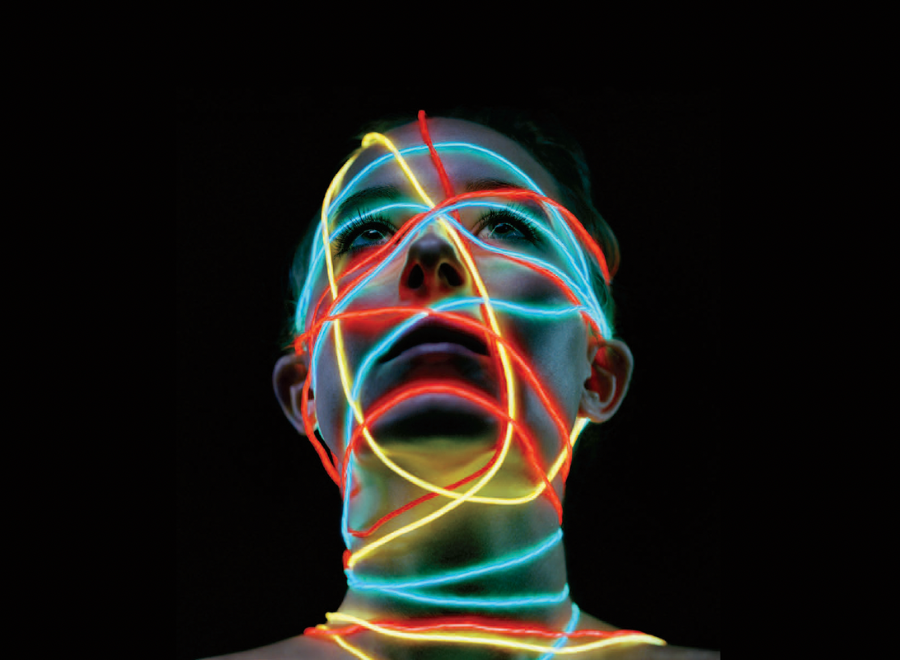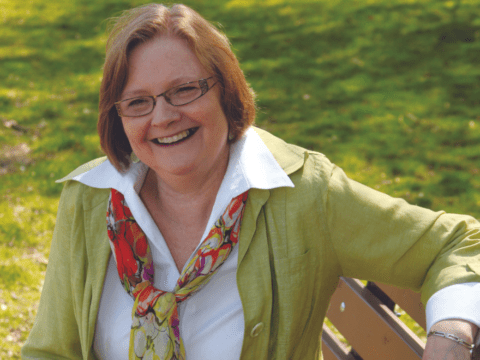Ask most members of the mainstream church what Sunday worship is for and you get answers like this: It’s for learning something. Or maybe even for understanding something. There is a small but growing faction of ministers in The United Church of Canada that begs to differ. For them, worship is about experiencing something — namely, the divine. And with a nod to new findings from brain science, some are pressing for a reshaping of worship and the teaching of worship leaders, so that it becomes a time for engaging the mind as well as the spirit.
Rev. Barbara White, minister at Bedford Park United in Toronto, has become enthralled with the possibilities that science suggests. They lead her to this question: “What is effective worship and how would neuroscience help design worship in ways that allow people to respond with the equipment they have?
The science that’s prompting these kinds of questions is advancing fast. For the first time, neuroscientists are able to watch the brain work, using real-time fMRI, or functional magnetic resonance imaging, and other technologies that are only a decade or so old. They can watch electrical and chemical activity happening in specific parts of the brain when nerve cells — or neurons — communicate with each other. Researchers have found that in order for the brain to take in information and experience, it needs to be calm, open and accepting. It shuts down when it’s bored, for example. Positive emotion — such as engagement — is a key part of taking in information and experience. It is the price of admission, rather than a function that happens separately in another part of the brain. Not only that, but it’s also clear that the more senses the information and experience engage, the deeper and more memorable the experience.
As well, the more the brain expects to be engaged, the more engaged it becomes. The more relevant the information and experience are, the better they are retained. The more actively the brain participates — as opposed to passively receiving — the stronger and deeper the experience. And here’s an odd one: if there is an element of risk — neither too much nor too little — the brain floods itself with dopamine, the chemical definition of joy.
At a recent Bedford Park United service, White put up a slideshow of faces from around the world in an attempt to explore and welcome diversity. As each face came into view, the congregation spoke these words: “You are a loved child of God.”
“The mood that got created was holy,” she says. “It was unbelievable.”
Neuroscientifically, what was happening in the brain during the service? People in the congregation were using several different parts of their brain at the same time, creating connective networks among their nerve cells.
They were looking at the pictures, reciting the words, hearing the words of other worshippers, and linking the photographs together in their brains to create their own narrative. As well, some of them may have been putting each photographed face into context, visualizing where the person in the photo lived, for example, or what that person’s life was like. Each of these actions was repeated each time a new face appeared on the screen, making the pathways between neurons stronger with each face.
It meant that a lot of different nerve cells and even networks of nerve cells were talking to each other at the same time. Parishioners’ brains were active, engaging, creating something that wasn’t there before. That’s high-level, powerful brain activity.
It differs from how the brain works during a conventional sermon. As Rev. Michael Kooiman, minister at Central United in Weston, Ont., notes, the conventional sermon typically goes like this: Say what you want to say; say what you say; and then say what you said.
Neuroscientifically, that traditional sermon uses far fewer neural connections than the more complex, participatory sermon. If the brain is passively receiving information, it isn’t active. It isn’t creating something of its own and is therefore less engaged. And when the brain not only knows what’s coming but also knows the familiar, non-participatory pattern in which the information will be presented, it gets bored. A bored brain doesn’t focus. Instead, it wanders off to spend its energy on what it’s going to have for lunch, or to dissect the love scene from the movie it saw the night before, or to parse the latest letter from the moderator.
Bottom line: traditional worship doesn’t excite many neurons. “We have created something that people can take or leave,” Kooiman says.
Kooiman, like Barbara White and others, is searching for a deeper experience in worship, without tossing out what many in the congregation love. “In the United Church, the challenge is how to transition to something more experiential without moving so far outside the tradition that it’s not recognizable,” he says.
Kooiman thinks it has to do with making worship unapologetically compelling. He recently went to Walt Disney World in Florida where the entrance fee gets you into a range of clubs, such as a 1980s disco or a cigar bar. He noticed that the longest lineups were at the comedy club where people knew there was the potential to lose themselves in laughter. People crave that kind of deep experience, he says.
Another way to look at it is to say the comedy club promises to give the neurons in the patrons’ brain a thorough dousing of dopamine and other reward substances that create a high. The brain then wants to sustain that high, which is also known as joy or happiness. It has to keep up with what’s going on and bring its own life experience to the jokes. It’s not that the cigar bar or disco couldn’t also provide elements of that experience, it’s just that when comedy works, it’s a sure-fire dopamine high, created deep inside one’s own brain rather than from the visual stimulation of disco lights or the high of nicotine.
Kooiman’s thinking on this, as well as his doctoral work at the Chicago Theological Seminary, has led him to embrace the Augustinian principle that the purpose of preaching is to teach, inspire and delight. While Augustine couldn’t look inside the brain, he could sense when worship moved his audience. Kooiman says that lots of United Church ministers have aced the teaching part of the Augustinian principle, some have mastered the inspiration part, but few are capable of producing delight. But it’s a key emotion in worship, he says, because it helps people, including children, relax and open up.
“I want them to feel delighted and calm because that means they are more fertile ground,” he says. “If they’re excited or pleased, they’re much more open.”
Kooiman finds that delight cuts through the critique that worship must not be just entertainment. For example, during prayers for the people, Kooiman invites parishioners to name things they’re concerned about and then he weaves them into an extemporaneous prayer. He’s been doing this for a decade.
Neuroscientifically, he’s got a point. When the brain is calm and open, it means the neurons are ready to start firing with new information. If the brain is worried about a fight its owner just had with a spouse, or is bored or hungry, it’s not nearly as open to creating new connections. Delight can help get the neurons firing.
Rev. Ross Lockhart of West Vancouver recently finished his doctorate at the Chicago Theological Seminary. While he was there, he spent many Sundays worshipping in African-American churches, including the one U.S. President Barack Obama used to attend. He noticed that worship engaged both the head and the heart. He took notes. “I’m a big believer that something should happen in worship,” he says.
But he also concedes that emotion-filled worship can produce skepticism — or outright revulsion — in some United Church circles. “In the United Church tradition, we fear the complete loss of emotional control in worship, and we associate it with Pentecostalism. The problem is, if you’re deeply hesitant or suspicious of emotion in worship, you retreat.”
Still, he dislikes the idea that sheer emotion is the answer. “Touchy-feely can feel very contrived,” he says.
On the other hand, brain science tells us that the other extreme — say, picking a social justice cause and using worship to make people feel guilty about it — can be just as big a turnoff. Guilt is such a powerful emotion that neurons actually shut down in self-defence and stop communicating with each other.
He doesn’t have the prescription for a new, more engaging worship. Dry ice and lasers are certainly not the answer, he jokes. Instead, Lockhart can only point to some of his own experiments that seem to work. He uses no notes when he preaches. His sermons are conversational. He encourages faith-sharing because when people talk about faith, emotion and meaning pour out of them.
Inside the brain, those practices encourage more neural activity because, for one thing, they provide a touch of risk. It’s not completely clear what’s going to happen during worship. The rogue element helps the brain stay interested, continuing to make pathways. Not only that, but if the sermon seems to be talking straight at you, you’re more apt to be listening. You have more at stake in being present. You may even have to participate. It all builds microscopic new connections among the brain’s nerve cells.
Barbara White, for one, thinks ministers need to be more up to speed on the links between worship and brain science. She’d like to see theology schools consider teaching neuroscience and invite ministers to take it into account so they craft services that appeal to all the senses, that ignite the brain’s wiring, that keep eye, heart and mind focused.
“I deeply believe that this is where worship should go,” she says. “This is how worship could work. Worship is not education. It is an authentic experience of the holy. The goal is to inspire.”
***
This story first appeared in The United Church Observer’s April 2010 issue with the title “Hardwired for worship.”















